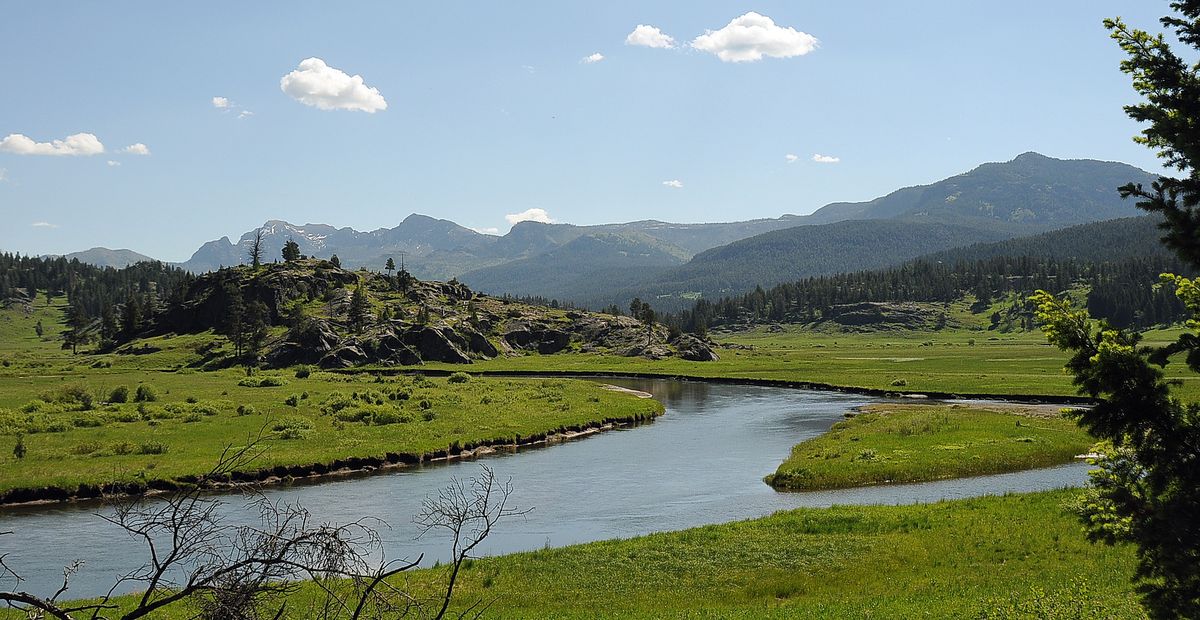Rainbow trout removal project proposed on wilderness stream that flows into Yellowstone

BILLINGS – In an attempt to protect Yellowstone cutthroat trout in one of their native strongholds, three agencies are joining forces in a proposal to remove rainbow trout from Buffalo Creek in the Absaroka-Beartooth Wilderness.
Buffalo Creek flows into Yellowstone National Park and joins Slough Creek – a popular fly-fishing destination. Slough Creek is a tributary to the Lamar River roughly 5 miles before it enters the Yellowstone River.
“Research clearly showed the biggest source of rainbow trout into the Lamar River is Buffalo Creek,” said Todd Koel, fisheries supervisor for Yellowstone National Park. “When it comes to rainbow trout mitigation, the Buffalo Creek project is the biggest and most-needed we have.”
Hybrids
The area near where Buffalo and Slough creeks join has become a “hot zone for hybridization” between native cutthroat and rainbow trout, Koel added.
A barrier was built to keep some of those rainbow trout from moving up Slough Creek. In addition, the park has catch-and-keep regulations for rainbow trout in Slough Creek and has used electrofishing to remove the nonnative fish.
“We’ve reduced prevalence in the Slough Creek meadows by a huge amount,” Koel said, dropping rainbow trout populations from 12 to 14% to about 3 to 4% using the combination of tactics. “By selective removals, over time it will continue to get better.”
Details of the Buffalo Creek proposal are contained in a Montana Fish, Wildlife & Parks’ environmental assessment. The public can comment on the proposal through noon on April 21.
Stocked
Nonnative rainbow trout were stocked in Hidden Lake in 1935 and spread downstream into Buffalo Creek. Prior to that, the stream was fishless due to a waterfall on the lower end of the stream.
Rather than return the stream to its natural fishless state, the fisheries managers from Yellowstone, the Custer Gallatin National Forest and FWP are proposing to restock the waters with native Yellowstone cutthroats. Because the stream has the waterfall as a barrier and runs through high, remote country, the officials said Buffalo Creek would provide a secure home for cutthroat as a warming climate threatens their habitat in lower-elevation waters.
“High-elevation refuges like the Buffalo Creek watershed will likely be the last strongholds for many native trout,” the Environmental Assessment noted. “Forty-three stream miles in the watershed have a 90 to 100% probability of remaining thermally suitable for Yellowstone cutthroat trout by 2040.”
Yellowstone cutthroat trout occupy 44% of their historical habitat, the EA said.
“In Montana, Yellowstone cutthroat trout remain in 33% of their historical range,” the EA said.
Invasion of rainbow trout into upper Slough Creek was discovered in the 2000s. Rainbow trout hybridization with native Yellowstone cutthroat has continued to increase in the Lamar River drainage since, the EA noted.
Co-op
The project would be the latest in a concerted effort by the agencies to restore headwater streams that flow into northern Yellowstone to create a cutthroat trout stronghold.
In previous years, nonnative fish were removed from Soda Butte Creek near Cooke City. Yellowstone fisheries crews have also removed brook trout from Elk Creek and its tributaries near Tower Junction. The actions are part of Yellowstone’s larger Native Fish Conservation Plan and have been extended to other streams across the park, as well as netting of nonnative lake trout in Yellowstone Lake.
“Outside of Yellowstone Lake, it’s the most important conservation effort we’re engaged in,” Koel said of his fisheries crew. “Here in the Lamar it’s a big preservation project before it degrades any further.”
To remove rainbow trout from Buffalo Creek, the agencies are proposing to use the chemical rotenone to poison fish. Even with the use of the effective chemical, it is estimated it will take three years of work to treat all 47 miles of the creek because of the difficulty accessing the region.
“Beaver dam complexes with approximately 26 acres of ponded water surface connection to streams increase the complexity of the area requiring treatment,” according to the EA.
“We’re systematically removing these threats and are hopeful the Lamar watershed as a whole will be secure,” Koel said.
Comment
The Buffalo Creek project is proposed to begin in mid-August with plans to be completed within or prior to the first week of September, according to the EA.
“Treatment would follow at the same time frame in following years until all rainbow trout are removed unless wildfire or extreme weather result in the need to postpone treatment for a year or more,” the EA said.